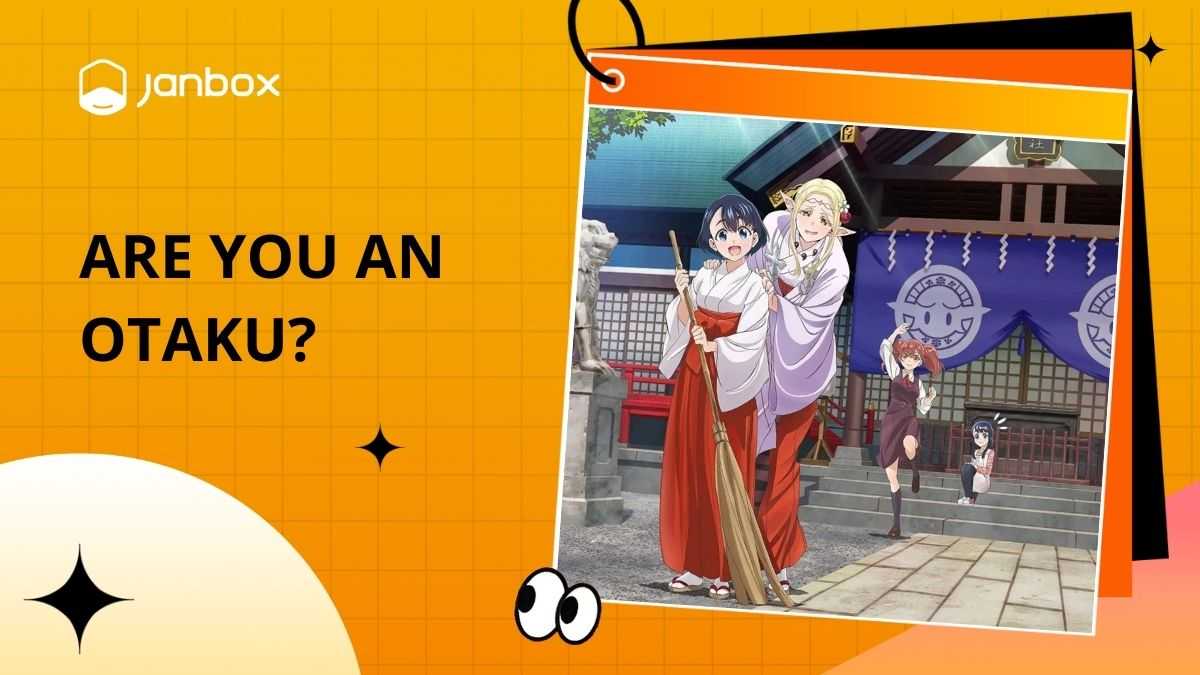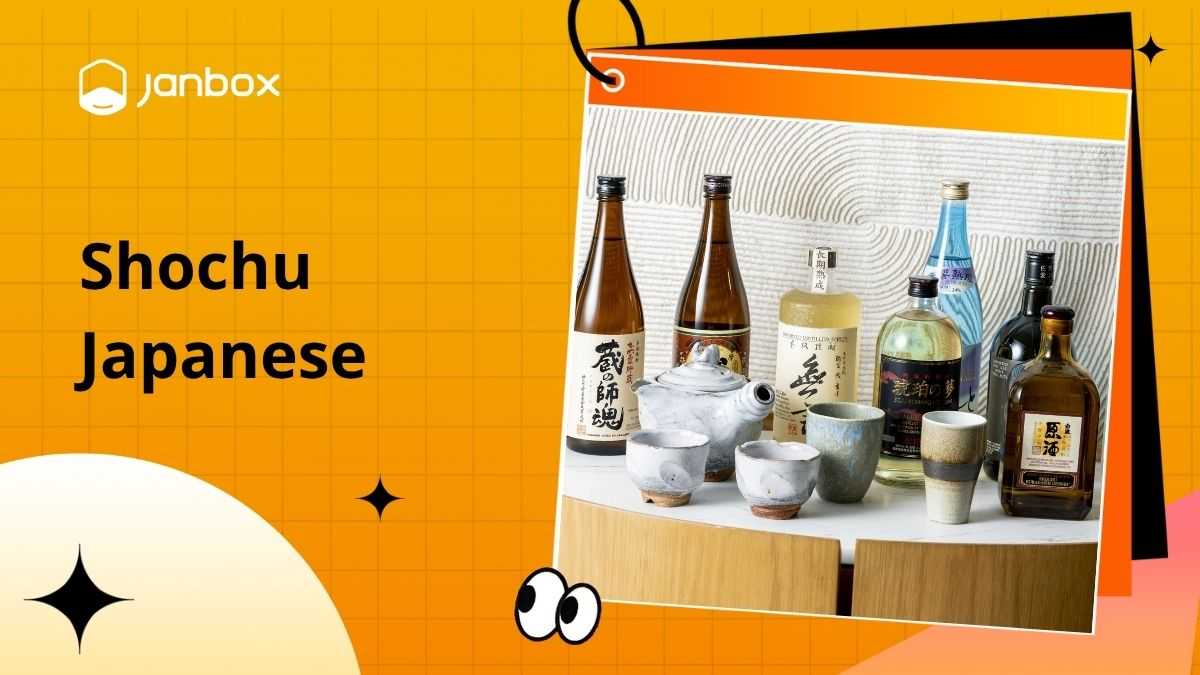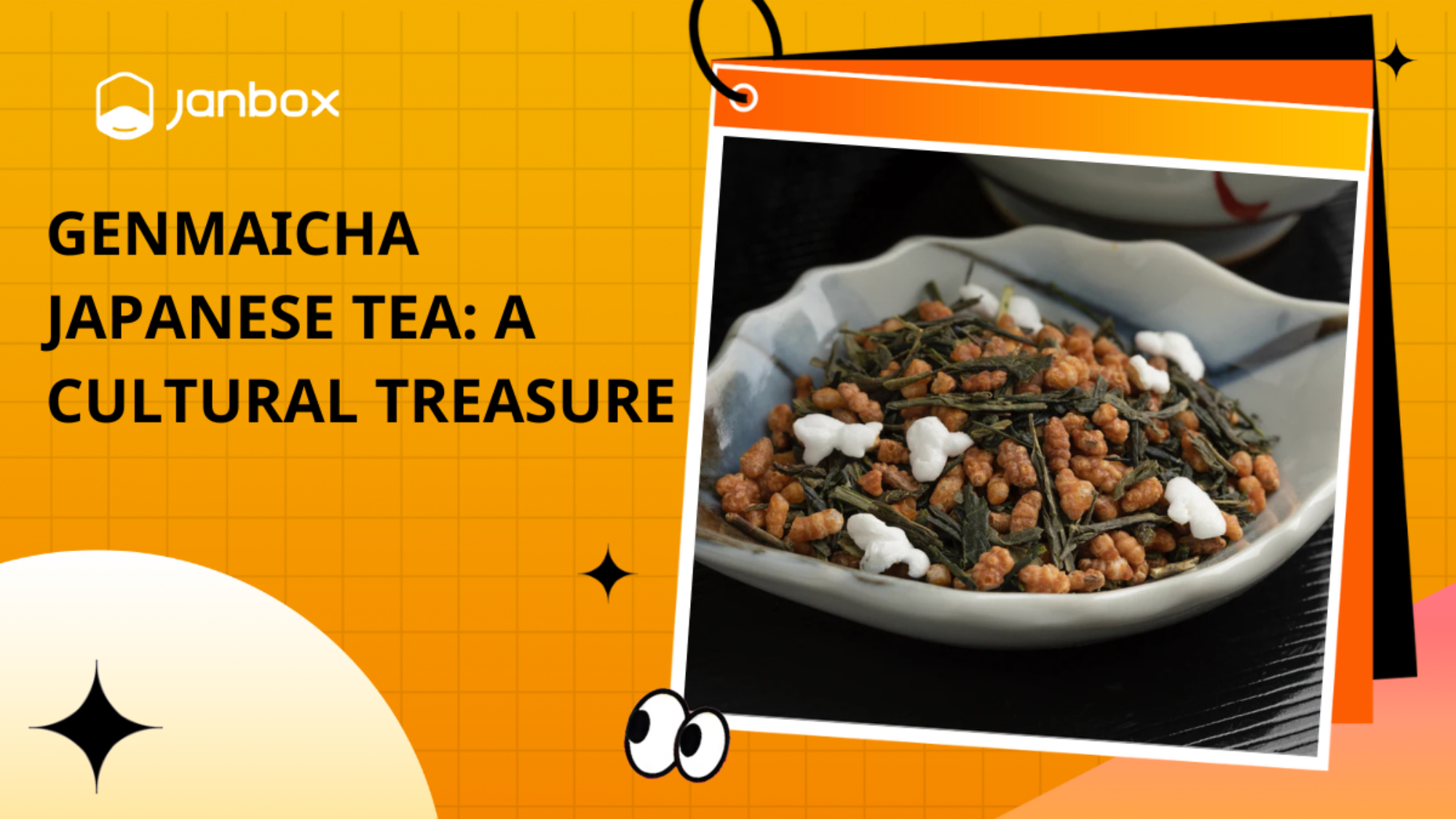Shoujo and Shounen manga, anime are well-known in Japan since they are typically the ones with active fandoms, mostly made up of young people. Long-time anime fans can tell the difference between Shoujo and Shounen off the top of their heads, but newcomers may find it difficult to keep up. In this article, we’ll go over what the terms Shounen and Shoujo signify, as well as the differences of Shoujo vs Shounen. Let’s start with Janbox!
1. What is Shoujo?

In Japanese, shoujo or shojo ( 少女) means “young girl” It is aimed towards adolescent females between the ages of 15 and 18. As a result, shoujo manga and anime are predominantly targeted at ladies in elementary and secondary school. Shoujo titles, however, are frequently liked by people of all ages. If you enjoy reading love stories, Shoujo is a genre you should check out.
Shoujo’s stories are more concerned with interpersonal relationships and romance than with battle and action. In the past, the shoujo series was more dramatic, yet they still have the adventure, humor, and action that shonen is known for. Almost every narrative features a female protagonist. Various sub-genres exist, including shoujo action, shoujo romance, shoujo fantasy, and others.
Today, nearly 90% of Shoujo manga writers are female, however, men were the pioneers of writing and drawing Shoujo manga in the 1950s and 1960s. The mother-daughter relationship was dominant at the time, but as the female manga force began to join in the drawing of Shoujo manga, the male-female relationship became an essential component of the Shoujo manga.
Shoujo Manga’s originality faded after the 1970s. Shoujo manga began to include other aspects such as fiction, comedy, family love, friendship, homosexuality, horror, and other cultural awareness as a result of changes in readers’ tastes and cultural awareness as a result of the evolution of society. As a result, Shoujo Manga gradually expands in both content and drawing.
2. What is Shounen?

In Japanese, the word shounen or shonen (少年) means “boy” as in a minor man, hence it covers male teenagers. Shounen refers to someone under the age of 18. Shounen, on the other hand, is a genre that appeals to individuals of all ages. There are additional sub-genres including shounen action, shounen romance, shounen sports, and others.
Shonen anime tries to appeal to all of the interests of young boys. The majority of the series is centered on adventure, action, determination, and battle, and features a young male protagonist or hero. Action, adventure, battling, drama, comedy, and coming of age are all present.
Shonen anime has a lot of positive vibes because it’s usually built on positive themes like tenacity, believing in oneself, having the bravery to never give up, and so on. Typically, this genre focuses on action and adventure rather than romance. Furthermore, self-improvement, discipline, sacrifice while on duty, and service to society, community, and family are all emphasized.
3. What is the difference between Shoujo and Shounen?

Anime and manga often cater to a wide range of viewers through a variety of genres. Two of the most popular categories are shoujo and shounen. The following factors will help you to distinguish the key differences between shoujo and shounen!
3.1. Gender of the Protagonist
Both genres have quite different protagonists. The primary protagonist in Shojo anime and manga is frequently a doe-eyed female in middle or high school. As she falls in love with the male protagonist of the series, the female main character blooms physically and emotionally to become her most loving self.
In shoujo titles that are more tsundere sorts, such as Misaki in Maid Sama!, you typically encounter outgoing and talkative female leads. In shonen, the protagonist is usually a young kid, around middle or high school age, with a great deal of bravery and a golden heart, such as Naruto. The shonen lead actor begins as an outcast determined to improve himself and alter the world.
3.2. Fan Service
Fan service is something that the shounen genre is sometimes chastised for (or applauded for, depending on who you ask). The term “fan service” refers to the inclusion of bikini shots and other sexual content in an anime, manga, or video game only to appease the fans. Normally, these scenes don’t have much of an impact on the broader plot.
Because shounen romance anime frequently feature a high school setting, this has been a source of worldwide criticism for many countries. As a result, there is a lot of fan service that sexualizes underage girls. Many titles have been restricted as a result of this when they were localized in the United States, Canada, and other English-speaking nations. As a result, shounen titles are more likely to feature extended bikini shots or female characters whose clothing is shredded for no apparent cause.
Fan service varies widely between the two genres, with shonen being far more common than shojo. Beach episodes and bathhouse sequences are the most popular sorts of fan service in shonen, with male characters seeing female characters naked or near-naked. In shojo, fan service may take the form of the main couple almost kissing, seeing the male lead shirtless, or having a passionate and flirty moment. Fan service, on the other hand, refers to content made solely to delight fans. While it is commonly associated with sexual material, there are various types of fan service.
3.3. Character Design
Character design is another significant distinction between shoujo and shounen. Female characters in shoujo frequently have wide, glistening eyes that glimmer whenever they encounter their crush, and they are usually petite. In shojo, the male protagonists are usually tall and thin, with an accent on their attractive faces.
Male characters in shonen are usually far more muscular, regardless of their height, with basic visage but distinctive hair or characteristics. This could be exemplified in Kuroko no Basket, where every “special” character with a special skill gets anime-colored hair, such as green or blue, rather than the more common brown or black. Female traits, such as curves and physical features, are frequently exaggerated.
>> See more: Top 18 best websites to buy anime figures from Japan
3.4. Drawing
Shoujo favors charming and pretty characters’ drawings, with eyes that are generally larger than in other Japanese manga. They frequently opt for more ethereal patterns. Outlines may be lighter than in Shounen, and, in contrast to other forms’ strong, rectangular borders, Shoujo may have softer borders or none.
3.5. Details
All genres of shonen anime and manga rely heavily on details, particularly action elements. In a typical shonen series, such as Dragon Ball, action could be a battle between two characters or a sports anime game between two opposing teams. Shonen usually jumps from one dramatic action moment to the next, building up to the series’ conclusion. The action detail of the shoujo is really distinct. Sailor Moon, like many other magical girl shoujo series, features actual fight scenes in which the characters use special abilities to combat their opponents.
3.6. Drama
There is drama in both anime and manga, but another difference between shoujo and shounen categories is drama. Drama in shonen frequently takes the form of battle or action sequences and can be quite intense, such as a character’s death or the return of a villain. Jealousy, misunderstandings, and issues in friendships and relationships are common themes in shoujo drama. Drama is generally followed by tears or a vocal squabble before the couple or duo reconciles.
3.7. Content
Shounen is known for emphasizing positivity in all ways. When the main character is losing, he or she refuses to give up and continues to battle. Shonen focuses on friendships and how to use them to defeat evil. One Piece is a great illustration of this, as the Straw Hat crew is often fighting their enemies as a team.
Shoujo, on the other hand, concentrates on romantic connections more than anything else. Friendships are also crucial in the genre, as the female protagonist’s friends frequently assist her with her problems. Those bonds, however, aren’t what save the day in the end. The protagonist’s sentiments for her crush/significant other, as well as her genuine feelings for her pals.
3.8. Targeted Audience
As previously said, translating for both of the words shoujo and shounen which the genres arise based on their target demographics, has a lot to do with the intended audience. Shonen anime and manga are primarily aimed at young boys between the ages of 12 and 18, whereas shojo is aimed at young girls between the ages of 12 and 18. Having said that, neither genre is unique to males or girls, as both are enjoyed equally by all genders. Everyone enjoys shounen and shoujo anime; yet, the topics of each were originally determined by the show’s intended audience.
3.9. Art
The difference between shoujo and shounen styles of art is also quite clear. In the manga, the difference in background design and the art style is more noticeable than in anime. Shojo manga is usually far more detailed than shounen manga. Each panel is completely fleshed out, the people are drawn in great detail, while the backgrounds are usually softer. Manga art in shonen usually gets right to the point. The shading will be much more intense to convey various moods and feelings, but the overall art will focus on the people or main subject rather than the background.
4. Popular shoujo manga series
4.1. Anmitsu Hime

Izumi Takemoto published the original manga in Anmitsu Hime in 1986-1987. Anmitsu Hime is the story of a carefree, rebellious, curious princess who frequently causes trouble for everyone. She left the castle and mingled with the people at her 16th birthday party, bored with having to introduce the princes to propose. The mischievous princess quickly fell in love with the gang’s leader. Please read this manga and discover the end.
4.2. Faster Than A Kiss

The story is about Fumino Kaji’s tough and challenging life. After her parents perished in a car accident, she and her 4-year-old brother were forced to walk the streets since no one would adopt them. Kaji chose to quit school to work in order to alter her life, and she met instructor Kazuma Ojiro, who decided to adopt her sisters. Then came a series of intriguing stories that piqued the interest of fans. At first glance, you will be unable to take your gaze away from this pure, private, yet equally romantic interaction between a teacher and a student.
4.3. Itazura Na Kiss

Itazura Na Kiss is written by Tada Kaoru. Coming to see this shoujo manga will make you feel as if you are reliving your school days, with the emotions that make “The Deviant Chopsticks” so interesting. The plot revolves around a student named Kotoko who has an absent-minded demeanor and “poor” academic results. However, she became aware of the situation and decided to risk making a confession to the sharpest “First Class” guy on the street.
4.4. Dengeki Daisy

Dengeki Daisy, unlike other happy and romantic stories, displays the most genuine emotions as well as the great sorrow and torment of unfathomable love due to the horrible darkness of the past. Teru, a high school student, receives a gift from her brother before his death: a phone connected to Daisy, who would take her position as her brother’s caregiver. Daisy appears to have become a confidante since then, sending her words of encouragement and fire to help her weather the storms of life.
4.5. Ichigo 100%

Mizuki Kawashita’s Ichigo 100 percent is a 167-chapter manga series. The entire colorful story began with an unexpected occurrence. The entire novel is around a love triangle, the turning point in Junpei’s love life, and many of the girls in his life. Ichigo is 100 percent a source of motivation for many young people, with his flower boy surrounded by gorgeous girls who play sophisticated pranks and his desire to conquer each character’s aspirations.
5. Popular shounen manga series
5.1. Naruto

This manga has 720 episodes and was adapted into Naruto Shippuden anime. Naruto Uzumaki is the main character, a boisterous, hyperactive adolescent ninja who is constantly trying to express himself in order to be acknowledged by others, and who aspires to become Hokage (Head of Konoha Village), the village’s ninja leader who is revered by all.
5.2. One Piece

This is a Continuity Story with Over 880 Episodes. Monkey D.Luffy is turned into a rubber man and will never be able to swim after eating the wrong Devil Fruit. The Straw Hat Pirates must battle a slew of other terrible pirates who want to monopolize One Piece, as well as the Government Navy, which wants to exterminate the pirates, on their quest to find One Piece. The Straw Hat Pirates had to overcome numerous obstacles in order to achieve their goal of “Becoming the Pirate King and obtaining the One Piece treasure.”
5.3. Fairy Tail

Hiro Mashima is the author of the Japanese comic series Fairy Tail. Since August 23, 2006, the manga has been serialized in Weekly Shonen, and it is still ongoing. Kodansha Publishing House then compiles and publishes the various chapters. As of October 2008, 12 volumes of Fairy Tail had been published. The plot follows the experiences of Lucy Heartphilia, a sorceress who joined the Fairy Tail organization and proceeded on a quest with Natsu Dragneel to find a dragon named Igneel.
5.4. Detective Conan

This is a classic work from 1994 that is well-known all around the world and is associated with several generations of readers’ childhoods. The series, dubbed “Sherlock Holmes of Modern Japan,” follows the skilled investigator Shinichi Kudo as he investigates and solves crimes. Because of the Black Organization’s penalty, Shinichi’s body was reduced to the size of a kindergarten student. He changed his identity to Conan Edogawa and moved in with his buddy Ran Mori, assisting her father, Mori, in case investigations. As of 2018, the manga had sold 230 million copies worldwide. Gosho Aoyama’s work won the 46th Shogakukan Manga Award in the area of shonen (comics for adolescent boys) in 2001.
5.5. Dragon Ball

Son Goku, a young guy with tremendous martial arts aptitude, is the hero of the story. The plot follows Goku on his quest to find and gather all seven Dragon Balls. He met and established numerous intriguing friends on his administrative journey. Dragon Ball is one of the shounen genre’s first AniManga series. It’s already a classic, and it’s boosted the genre’s popularity. As a result, it’s no surprise that this masterpiece is included in this list of the best shounen anime of all time.
Conclusion
Hopefully, Janbox’s article on the difference between shoujo and shounen will help you quickly choose the genre you enjoy. The shoujo and shounen genres should be used as a guide to identifying good manga to read, not as a must. So just read whatever you want.
We hope you found this article inspring! If you did, we’d love if you could share it with your fellow Japan lovers. You’re also welcome to join us on Facebook, Pinterest, Twitter, and Instagram for more tips and inspiration!
————————————————————————————————————
About Janbox – Japan In A Box
Most Japanese online shopping is extremely difficult because the majority of Japanese websites do not ship internationally and only take domestic credit cards. For that reason, Janbox’s mission is to simplify buying process from Japan for consumers. We’ll help you to optimize the products with our intelligent proxy service. You may buy high-quality items from Japan and have them sent to your house quickly and safely with just a few simple steps!









